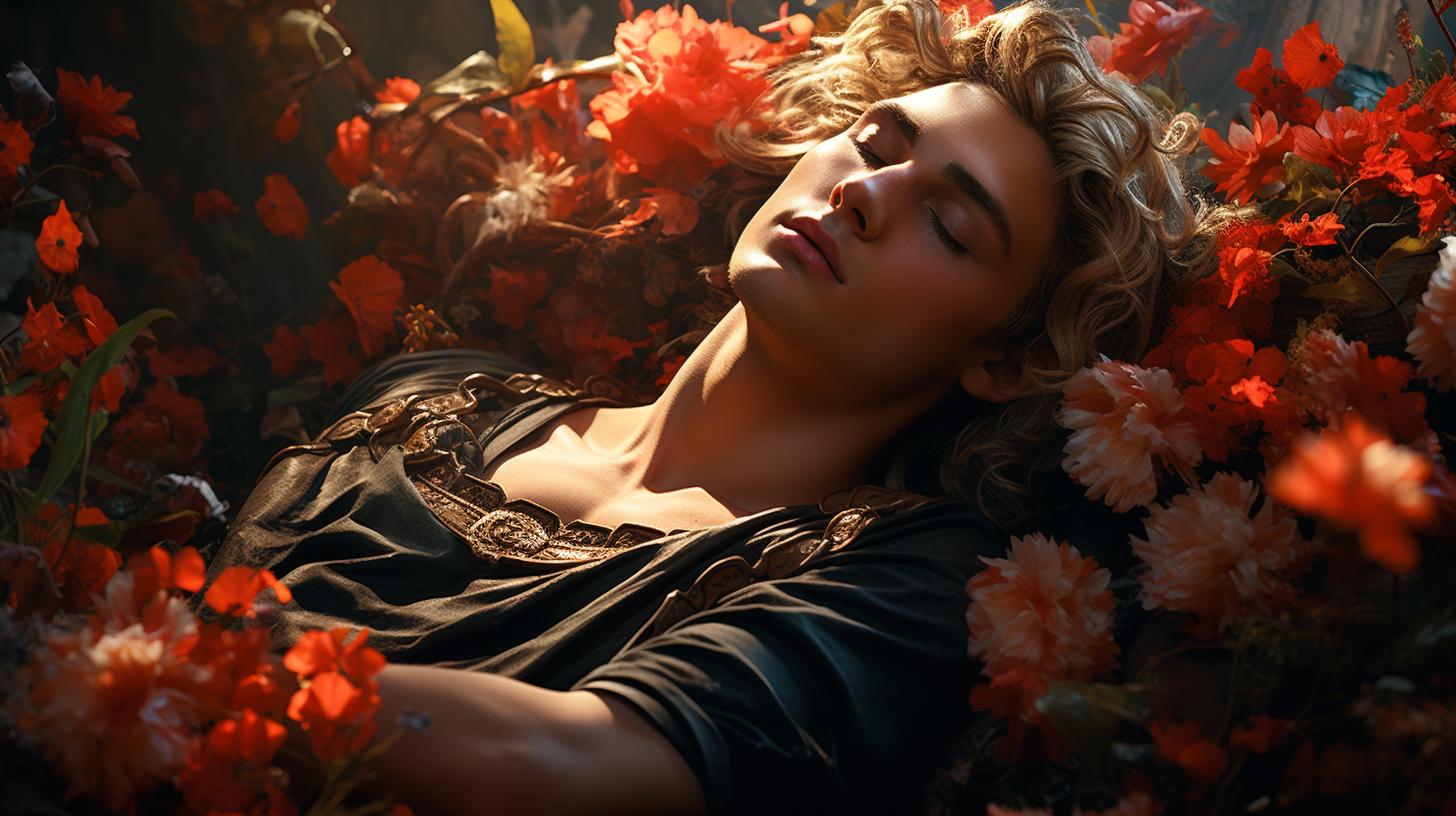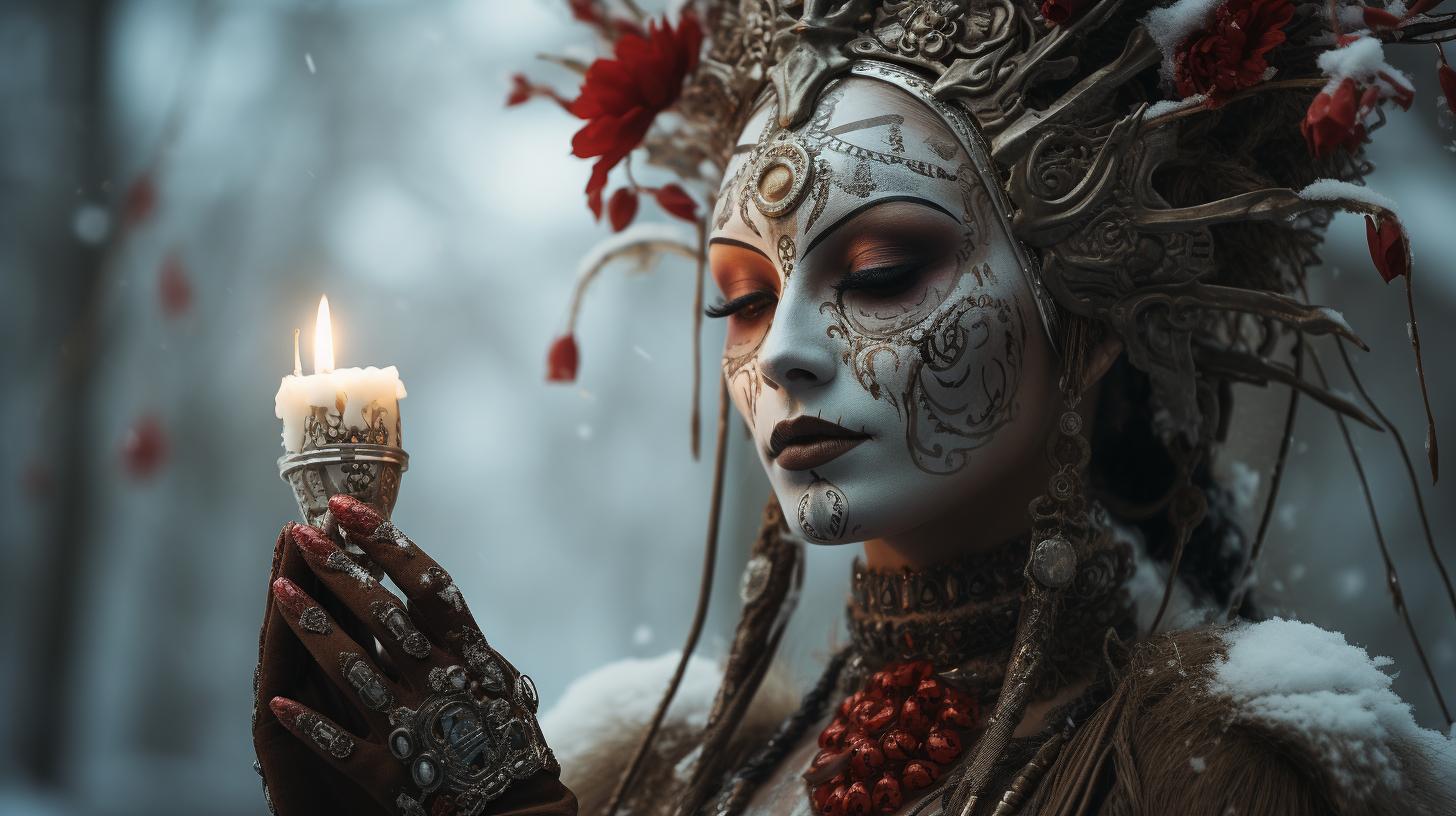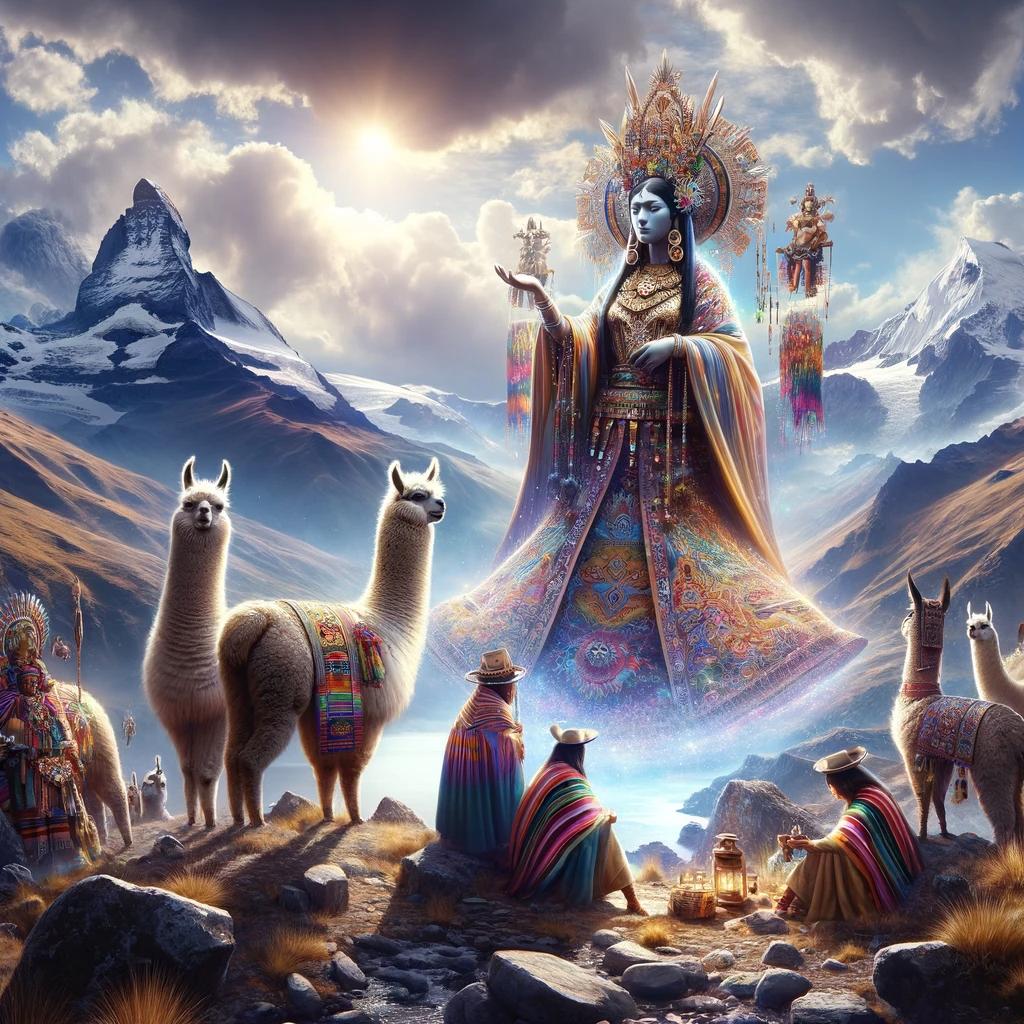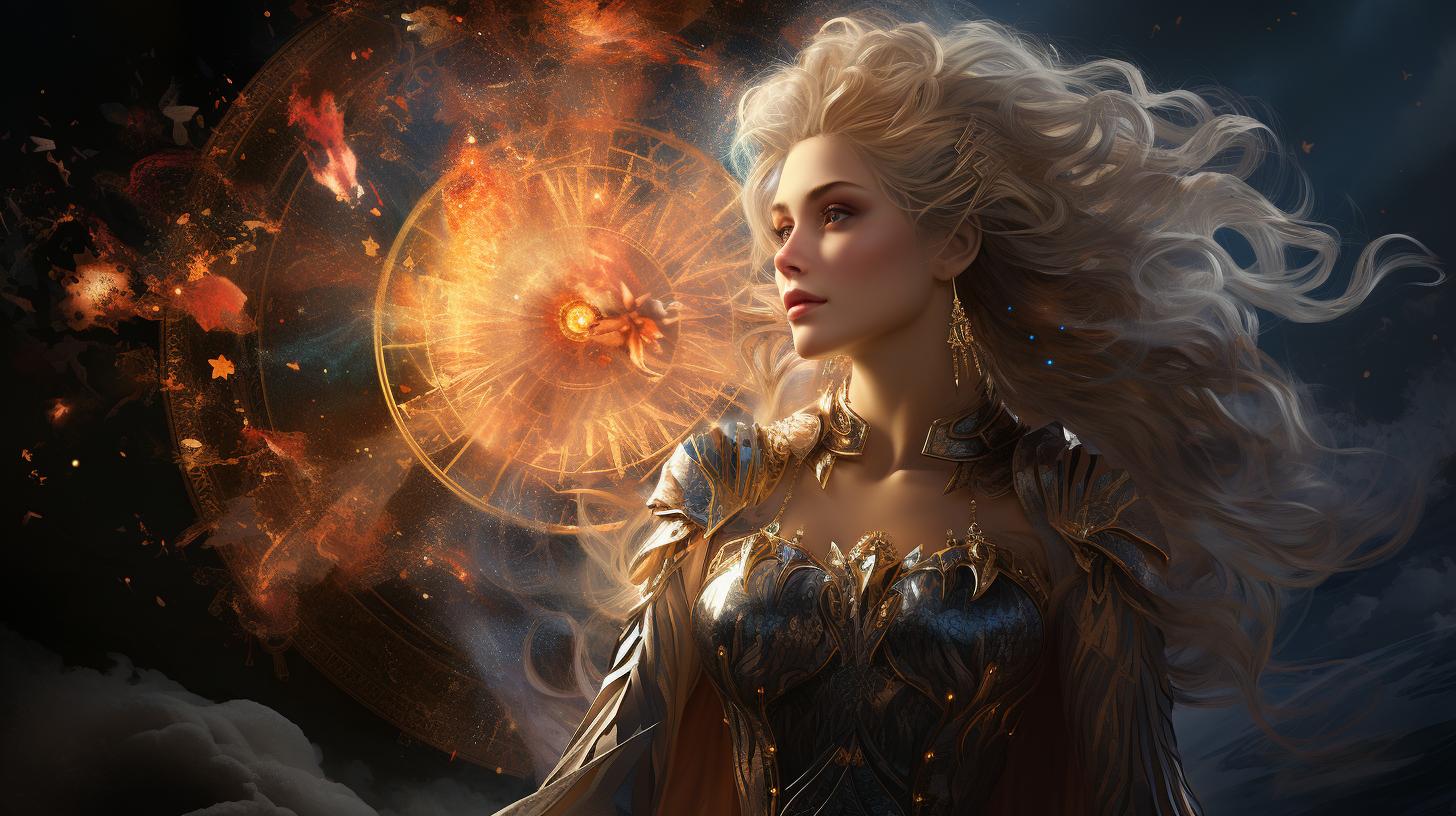Vesna Goddess: The Enchanting Symbol of Spring and Fertility
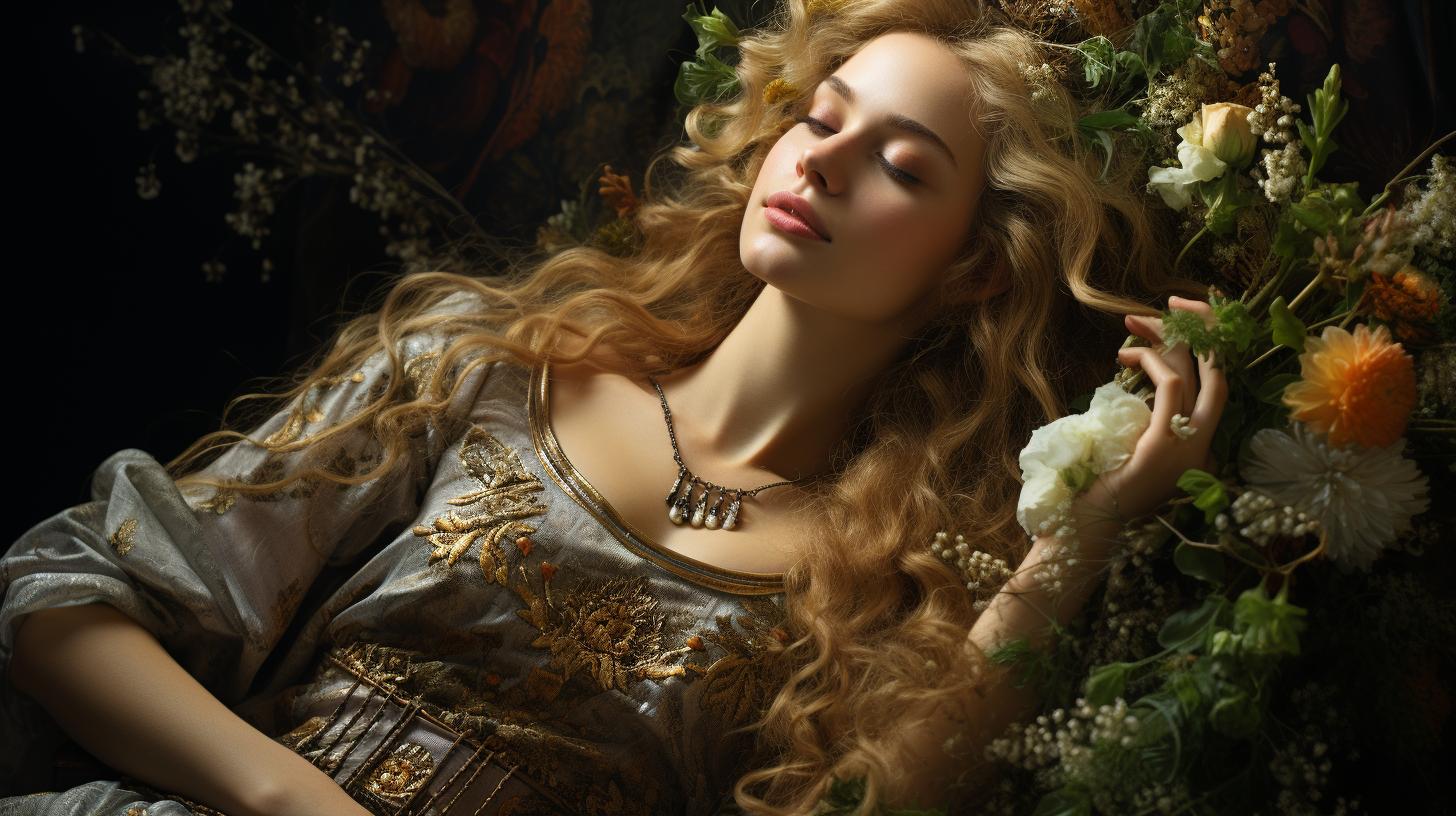
Vesna goddess, a revered deity in Slavic mythology, embodies the essence of spring and fertility. Associated with rituals in rural areas, Vesna is often depicted as a radiant and beautiful woman adorned with flowers and leaves.
She is closely related to the goddess Morana, representing the cycle of death and rebirth in nature. Celebrations and traditions honoring Vesna have deep roots in Slavic culture, highlighting her role in bringing forth new life and harmonizing the natural world.
Explore the mythology, symbolism, and cultural significance of Vesna goddess in this comprehensive article. Stay tuned for a captivating journey through Slavic folklore and traditions surrounding Vesna.
The Mythology of Vesna Goddess
Welcome to the fascinating world of Vesna goddess, a prominent figure in Slavic mythology.
Exploring the origins, symbolism, and connections of Vesna offers incredible insights into the rich folklore of this enchanting deity.
Origins of Vesna in Slavic Mythology
Vesna’s roots can be traced back to ancient Slavic mythology, where she emerged as a revered goddess representing spring and fertility. She dwells in the hearts of rural communities, with rituals and celebrations dedicated to her during the spring season.
Vesna signifies the rebirth of nature and the arrival of abundant life after the long winter slumber.
Symbolism and Representations of Vesna
Vesna is depicted as a radiant and vibrant woman, embodying the essence of life and fertility. Often portrayed with flowers adorning her body, she radiates beauty and vitality. Vesna’s smiling face, bare feet, and flowing hair contribute to her healthy and vibrant appearance.
Various representations show her carrying grapes and apples or accompanied by a swallow and a bouquet of flowers, symbolizing the abundance and joy of spring.
Vesna’s Connection to Morana and Mokosh
Vesna shares a unique connection with other deities in Slavic mythology, particularly Morana and Mokosh. Morana represents the cycle of death and rebirth in nature, while Mokosh is associated with feminine power and prosperity.
Vesna’s interactions with these goddesses create a captivating narrative of harmony, balance, and the perpetual cycle of life.
Vesna Goddess in Slavic Culture
Vesna goddess holds a significant place in Slavic culture, where her presence is celebrated through various customs and rituals. Let’s explore the fascinating aspects of Vesna’s role in Slavic culture.
Celebrations and Rituals Honoring Vesna
Throughout Slavic countries, vibrant celebrations and rituals are held to honor Vesna and her association with the arrival of spring.
These festivities serve as a way to express gratitude for the rebirth of nature and the promise of fertility. People come together to dance, sing, and partake in traditional customs that beckon Vesna’s blessings.
- Dancing around maypoles adorned with colorful ribbons symbolizes the joy and vitality brought by Vesna’s arrival.
- Lighting bonfires not only signifies the end of the cold winter but also represents the power and warmth of Vesna’s energy.
- Offerings of flowers, fruits, and grains are made to Vesna as a gesture of appreciation and a request for abundance in the coming seasons.
- Gathering in communal feasts strengthens the bond between individuals and emphasizes the importance of unity in welcoming Vesna’s blessings.
Vesna’s Role in Springtime Festivals
Springtime festivals are infused with the spirit of Vesna goddess, as she is regarded as the harbinger of new beginnings and growth.
These festivals serve as a time for communities to come together, celebrate nature’s awakening, and seek Vesna’s guidance for a prosperous future.
- Colorful processions take place, where individuals wear vibrant costumes representing the blooming flowers and the lively spirit of Vesna.
- Traditional music and dances reflect the joy and liveliness associated with Vesna’s presence.
- Games and competitions centered around springtime activities such as egg rolling and flower crowning bring people closer to nature and foster a sense of community.
- Artistic performances, including theatrical plays and storytelling, often revolve around tales of Vesna’s triumph over the cold and dark forces of winter.
Vesna as a Powerful Figure in Folklore
Vesna’s influence extends beyond her association with spring and fertility.
In Slavic folklore, she is often depicted as a powerful figure who represents rejuvenation, hope, and the triumph of life over death.
- Legends narrate Vesna’s magical role as the force behind the awakening of dormant plants and the birth of new life.
- Her ability to restore vitality and balance to the natural world is cherished and invoked through rituals and prayers.
- Many folktales attribute Vesna with the power to heal the sick, bring luck and prosperity, and protect against malevolent forces.
- The reverence for Vesna in folklore showcases her enduring impact on Slavic culture and the belief in her ability to bring harmony and abundance.
As we delve deeper into the rich tapestry of Slavic culture, we come to appreciate the integral role of Vesna goddess.
Her significance in celebrations, festivals, and folklore serves as a testament to the enduring legacy she holds in Slavic societies, where her presence continues to inspire and invoke the spirit of springtime renewal and fertility.
Vesna Goddess in Different Slavic Cultures
The depiction and significance of Vesna goddess vary across different Slavic cultures. She holds a prominent position in Russian mythology, where her presence is deeply intertwined with their folklore and traditions.
Vesna in Russian Mythology and Traditions
In Russian mythology, Vesna is revered as the embodiment of spring and the bringer of new beginnings. She is associated with the rebirth of nature after the long, cold winter.
The arrival of Vesna is eagerly anticipated, heralding the awakening of the earth and the return of life.
Russians celebrate Vesna through various rituals and customs. Festivals and ceremonies are held to honor her arrival. People gather to sing, dance, and perform traditional rites symbolizing the renewal and fertility brought by Vesna’s presence.
These celebrations are integral to the Russian cultural fabric, connecting people to their ancestral roots and the cycles of nature.
Vesna’s Significance in Serbian Folklore
In Serbian folklore, Vesna holds a special place as a goddess of fertility and prosperity. She is revered for her ability to bless the land and bring abundance to the people.

Serbian traditions often revolve around Vesna’s role in ensuring a bountiful harvest and a prosperous future.
Celebrations and rituals dedicated to Vesna in Serbia involve communal gatherings, music, and dance. These festivities serve as a way to express gratitude for Vesna’s blessings and to reaffirm the interconnectedness between humans and nature.
Vesna’s presence is believed to foster harmony and joy within the community.
Vesna’s Connection to Czech and Slovene Mythology
In Czech and Slovene mythology, Vesna is also celebrated as a goddess associated with the arrival of spring. Her presence signals the awakening of nature and the renewal of life.
She is often depicted in folklore as a radiant figure, symbolizing beauty, youth, and the vibrant energy of the changing seasons.
Czech and Slovene traditions pay homage to Vesna through various customs, including the decoration of homes and public spaces with flowers and greenery. These rituals serve as a way to honor Vesna’s role in the rejuvenation of the natural world and to express gratitude for the abundance she brings.
The Influence of Vesna in History and Language
Throughout history, Vesna has left a profound impact on Slavic poetry, literature, and cultural expressions. Her symbolism as the goddess of beauty, youth, and rejuvenation has inspired countless artists, writers, and musicians in their creative endeavors.
Vesna’s Impact on Slavic Poetry and Literature
Vesna’s enchanting persona has served as a muse for many Slavic poets and authors. Her association with the vibrant energy of spring and the renewal of nature has been skillfully woven into verses and prose.
Poets have invoked her name to evoke feelings of hope, optimism, and the eternal cycle of life. Her essence resonates within the lines of classic Slavic literature, enriching the cultural heritage of the region.
Vesna as a Symbol of Beauty and Youth
Vesna’s portrayal as a radiant and youthful goddess has made her an enduring symbol of beauty and eternal youth in Slavic culture. She represents the vibrant energy and vitality of the spring season, encouraging individuals to embrace their own inner beauty and celebrate the fleeting nature of youth.
Artists and sculptors have captured her grace and allure, immortalizing her image in various artworks and sculptures.
The Poetic Word ‘Vesna’ and its Cultural Significance
The very word ‘Vesna’ holds deep cultural significance in Slavic languages. It not only refers to the goddess of spring but also serves as a poetic term associated with the rebirth of nature, new beginnings, and the blossoming of emotions.
The term ‘Vesna’ carries with it a sense of hope, joy, and the anticipation of brighter days ahead, making it a cherished word in Slavic literature and everyday conversations.
In summary, Vesna’s influence on history and language is widely felt in Slavic cultures.
From inspiring poetic expressions to embodying the ideals of beauty and youth, Vesna has left an indelible mark on the artistic and linguistic realms of the region. The poetic word ‘Vesna’ itself encapsulates the essence of renewal and the optimism that comes with the arrival of spring.
It is a testament to the enduring power of Vesna goddess in shaping cultural narratives and celebrating the rhythm of life.
Vesna Goddess: Nature’s Rebirth and Fertility
Vesna goddess encompasses the essence of nature’s rejuvenation and fertility, embodying the cyclical cycle of life and death. Within Slavic mythology, she holds a significant role in the rebirth of the natural world during the spring season.
Let’s explore Vesna’s profound influence and symbolism in this domain.
Vesna’s Role in the Cycle of Life and Death
Vesna’s presence in Slavic mythology signifies the perpetual cycle of life and death. As winter transitions into spring, Vesna acts as a catalyst for the rebirth of nature. She brings forth revitalization, breathing life into the once dormant landscape.
This role highlights the interconnectedness between the changing seasons, emphasizing the eternal renewal of life.
Vesna as a Symbol of Renewal and Growth
Vesna serves as an emblem of new beginnings and growth. Her radiant figure and vibrant energy encapsulate the rejuvenation of the natural world. With her arrival, the once barren earth bursts forth with blossoms, greenery, and vitality.
Vesna empowers the land to flourish, facilitating the growth of crops, plants, and all living beings.
The Beliefs and Superstitions Associated with Vesna
Various beliefs and superstitions surround Vesna, further illuminating her significance. Many Slavic cultures view her as a benefactor of fertility, invoking her aid for abundant harvests, healthy livestock, and prosperous endeavors.
Superstitions also revolve around Vesna’s influence on love and relationships, with some believing that couples who marry during her season will experience everlasting happiness.
- Her arrival signals the end of winter’s grip, symbolizing the triumph of light and warmth over darkness and cold.
- Vesna’s likeness adorns amulets and talismans, believed to bring good fortune and protection.
- People partake in rituals such as dancing, singing, and feasting to honor Vesna and invoke her blessings.
- Some traditional practices involve wearing flowers or decorating homes with vibrant blooms as offerings to Vesna.
Vesna’s multifaceted symbolism and the beliefs associated with her continue to resonate in modern Slavic culture, attesting to her lasting impact on the collective consciousness.
The Legacy of Vesna Goddess in Modern Times
Vesna, the beloved goddess of spring and fertility, continues to exert her influence in contemporary culture. Her timeless symbolism and enduring significance resonate with people in the 21st century, reminding us of the eternal cycle of life and the beauty of nature’s rebirth.
Vesna’s Continuing Influence in Contemporary Culture
Vesna’s enchanting presence can be witnessed in various aspects of modern society. From art and literature to fashion and entertainment, her image and symbolism captivate the hearts and minds of many.
Artists and designers draw inspiration from Vesna’s radiance and incorporate her motifs into their creations, infusing them with a touch of her fertility and rejuvenation. Additionally, Vesna’s story serves as a source of inspiration for writers and filmmakers, enabling her myth to live on in modern storytelling.
Vesna’s Relevance in the 21st Century
In the fast-paced and technologically driven world of today, the importance of connecting with nature and embracing the changing seasons is more vital than ever. Vesna’s mythology reminds us of the profound connection between humanity and the natural world.
She encourages us to appreciate the beauty of the earth, nurture its resources, and cultivate a harmonious relationship with the environment. As society grapples with environmental challenges, Vesna serves as a subtle yet powerful reminder of the need to protect and preserve our planet.
Preserving and Celebrating Vesna’s Mythology
Efforts to preserve and celebrate Vesna’s mythology continue to thrive in contemporary Slavic cultures. Various cultural festivals, such as Vesna Fest in Russia and Vesna-Spring Festival in Slovenia, pay homage to the goddess and her significance in the cycle of life.
These celebrations bring communities together, fostering a sense of unity and cultural pride. Furthermore, researchers and historians diligently study and document Vesna’s mythology to ensure its preservation for future generations. By understanding and honoring Vesna’s legacy, we uphold the rich heritage of Slavic folklore and the profound wisdom it imparts.
In conclusion, the legacy of Vesna goddess perseveres in modern times, inspiring artists, resonating with the need for a closer connection with nature, and fueling the revival of cultural celebrations and traditions.
Through ongoing appreciation and preservation, Vesna’s powerful symbolism and mythical allure will continue to captivate and enlighten us in the 21st century.
.











